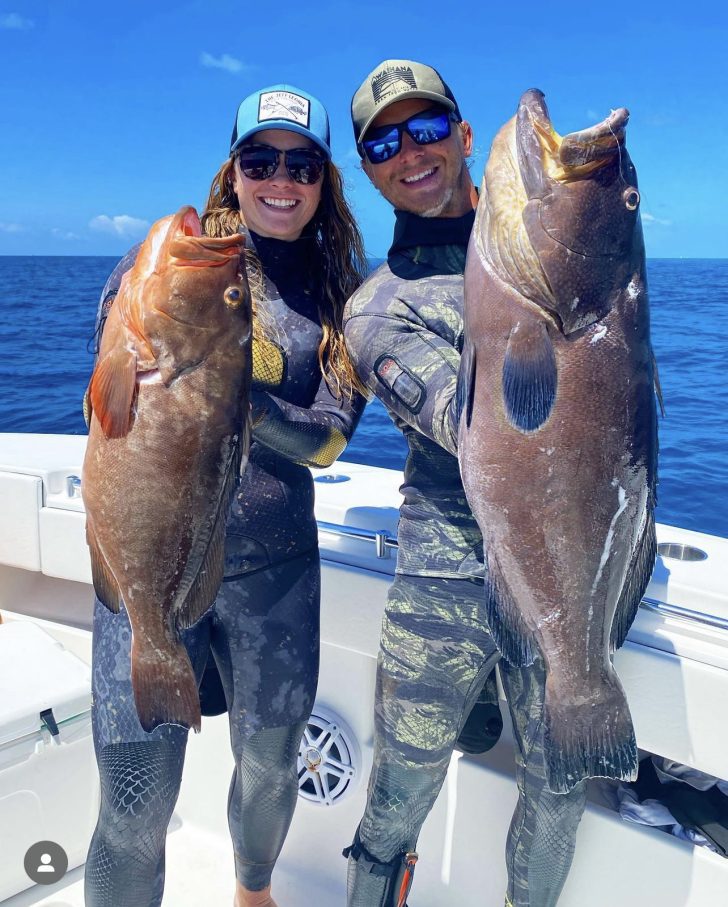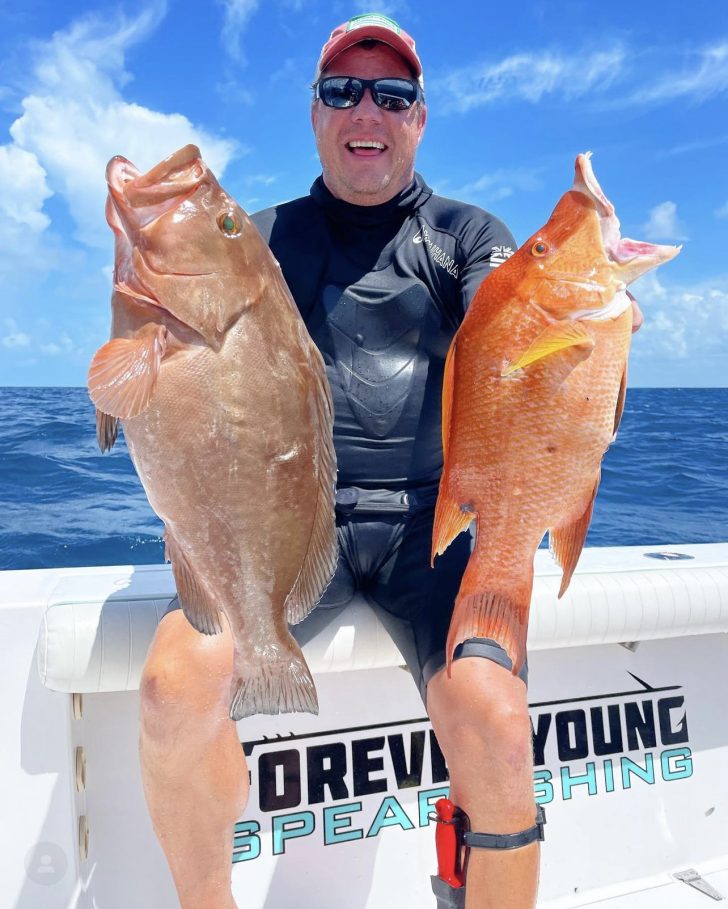by: Capt. Tony Young
For many divers and anglers coming to fish in the Florida Keys, our favorite time of year has finally arrived! Grouper and Hogfish season is officially open and will remain open through November 30th for Hogfish and December 31st for Grouper. If you’re diving, Grouper is always the fish we look forward to hunting all day. For fishing, this season adds excitement to every spot you fish, whether it be a wreck or a reef. While drifting for muttons, or anchored up yellow tailing with a bottom rod, May 1st marks the beginning of excitement knowing all those fish you’ve been releasing all winter can finally come back to the dock with you!
After spending most of the winter months drifting for pelagic fish, spearfishing the shallow and deep reef spots for Grouper is a great change of pace. The shallow patch reefs are great for entry level freedivers, looking for those red groupers and hogfish. Red Grouper, unlike Black Grouper which are generally found deeper, act very curious in the water and allow newer hunters an easier target. They taste absolutely delicious, and you are allowed to keep three per day within your total grouper aggregate. Hogfish love the sand and use their snout-like mouth to dig down in search of food. The Florida Keys has seen a great recovery in the Hogfish population since the size and bag limit changed a few years back. Hogfish, alike Red Groper, are a great target for new hunters. We find good sized fish in shallow depths, and they are easy to approach for a shot. Remember they need to be a 16” fork length size to be legal, I look for that dark line on their head with a curved snout.


Coming off the winter bluewater season, you will need to switch up your rig. For winter pelagics we run powerhouse guns with floats, this is not needed for grouper. I recently built a new gun, specifically for hunting large Black Grouper. I call my gun the “Super 60”, which is a 60” Amero speargun built by Hatch Custom Spearguns. This rig is outfitted with three bands, 5/16” diameter shaft, cable Neptonics stiptip, cable rubber coated shooting line, and a 60m reel. Groupers have a very different skin than snapper and a slip tip can hang onto the thinnest little piece of Grouper Skin if you do not apply too much pressure, which is why the reel comes in handy. The cable will keep your fish from breaking off if they run into a coral head or section of a wreck, nothing is more heartbreaking than losing a nice fish to the wreck. If you’re shooting without a reel, I’ll often let go of my gun to allow the fish to run on a less than ideal shot placement. Your fish will head to the first hole he sees and try to get cover.

Getting back to the dock with a nice mature Grouper in the box is a great feeling. Save every part of the fish and enjoy the meals. Currently, my favorite cut of meat from this fish is the collar (throat). My favorite way to prepare the throat is to make smoked pulled grouper sliders. I’ll do a BBQ rub on the grouper collar and smoke it at 220 degrees till the meat pulls off the bone, basting the meat in a good sauce while it smokes. Once you get the meat pulled apart, place it on your favorite bun or roll with some good coleslaw and sauce of your choice. This recipe is excellent and has a unique taste that most aren’t accustomed to with fish. We also enjoy cooking what I call Grouper chips, thinly sliced pieces of the Grouper meat that is floured and pan fried. Dip in a homemade chipotle sauce and you have a perfect appetizer or meal on its own!
I hope you enjoy the challenge of hunting grouper as much as we do, they are an amazing fish and a prize species to target for the day! Remember that mature grouper have been down there a long time and have seen every trick in the book. Take your time and hunt them slowly, the reward is worth the patience.
Dive Safe!
